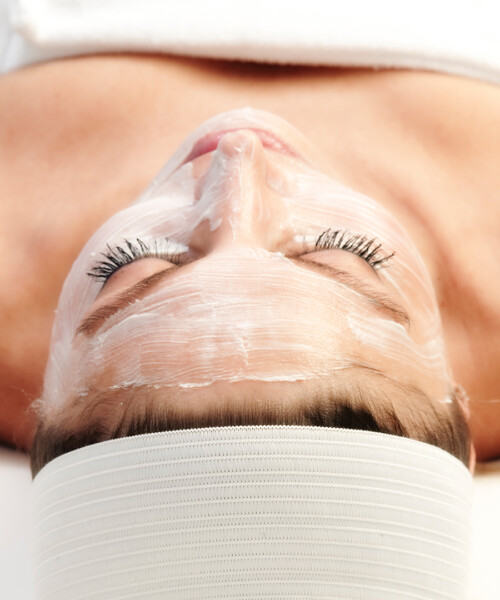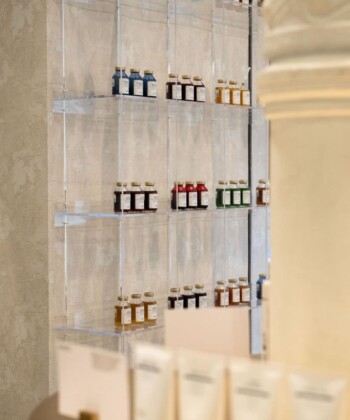In the age of wellness and beauty, finding a personalized routine can seem all but impossible thanks to an overload of skincare tips and tricks. What if the latest serum makes you break out? What is a serum, anyways? How important is it to go all-natural? How can anyone figure this out without buying it all to try?
Such are the questions anyone who reads about (or simply: cares about) beauty is faced with. So we caught up with Dr. Amy Wechsler, board-certified Dermatologist and Psychiatrist (and Consulting Dermatologist for Chanel Skincare) to get an expert’s take on where to start, what to do and more importantly: what not to do.
Below, see Dr. Wechsler’s universal tips for creating an ideal beauty routine.
1. Start Small, Build Your Routine from There
“Start with the basics, don’t get overwhelmed with multiple products,” Dr. Wechsler says. “I always think you can start with three skincare products, and it can be great, and then add to that.” Finding an effective-yet-gentle cleanser, a moisturizer that suits your skin’s needs (neither too heavy or too light), and a good SPF are all the foundation for an effective routine.
“I just think that people should start slowly and add things methodically,” she says. No need to try products for the sake of trying them, stick to what your skin knows and likes. “If you go to a counter, you might end up with like 12 products, and that’s super confusing! And if someone finds something great for their skin, they never need to switch them. I really think if you find something that works and you love it, then it should always work.”
2. Get the Best out of Your Ingredients
It’s important to remain up-to-date on which fads are worth following, and which aren’t. For example, Dr. Wechsler likes hyaluronic acid as a moisturizing agent. “Hyaluronic acid is not irritating by itself. I’ve actually never seen it irritate anyone, because pure Hyaluronic Acid is found in our skin and in our joints,” she says.
Some of the industry’s most buzzed-about ingredients may not live up to expectations, either. “I think that topical antioxidants make a lot of sense, but those antioxidants that make a lot of sense are the ones that are still active when put in a cream and when exposed to air, and there aren’t that many of them,” she says. One of such beloved molecules, Vitamin C, claimed for its radiant and brightening qualities, is one of them.“Vitamin C looked awesome in the laboratory. It’s a strong antioxidant, and it looks like it quenches all the oxidative stress. Vitamin C is very easily oxidized into an inactive molecule when exposed to oxygen. Clinically, it doesn’t really do much.”
The key, she says, is “finding an antioxidant that not only looks awesome in the laboratory but when you mix it with other ingredients, that still works.” Wechsler, for example, loves silver-needle white tea for its high antioxidant levels and sturdiness.
3. Exfoliate Properly
Chemical exfoliators—products that exfoliate via peeling and not scrubbing—have been heralded by many as a skincare savior. Dr. Wechsler agrees, conditionally. “I’m not a huge fan of AHAs [Alpha Hydroxy Acids, such as Glycolic and Lactic Acids] and prefer my patients to use BHAs [Beta Hydroxyl Acids]. AHAs tend to be more irritating and stinging than BHAs, so I recommend experimenting with them first,” she says. “I find BHAs are not only less irritating, but also can be better for acne.”
Additionally, not all scrubs are created equal: keep an eye out for something with smaller buffing grains, as opposed to larger ones. “Gentle grains like sugar, oatmeal or small synthetic beads can be found in common exfoliating products that you can use once or twice a week,” she says.
4. Consider the Retinol
A derivative of Vitamin A, retinol is on the more controversial side of skincare. Adored for its strong anti-aging and anti-acne properties and cursed for its ability to dry the skin, the ingredient is both loved and feared. Dr. Wechsler prescribes them regularly in her practice, but recommends giving time for your skin to adjust to them. “I suggest you start by applying the treatment twice weekly—at night while your skin is naturally recuperating,” she says. “This helps minimize the irritation that usually accompanies the treatment when you first start out.” she elaborates. “Then you would increase how often you use it, with the goal of applying it every night. Retinoids rank high on my list of skin-renewal candidates.”
5. Not all Professional Treatments Are Worth It
Between lasers, peels and other dermatological procedures, some treatments yield barely any result while others can irritate the skin beyond expectations. Others can impart a lasting radiance. “A trend for a while was to make a laser with no downtime. Unfortunately, a lot of the lasers that have no downtime don’t do much,” Wechsler explains. “I think there will be different delivery systems to get botox and filler into the skin, we’re testing one out right now. I don’t like microneedling, it’s pretty traumatic to the skin and I don’t think it does anything good. I think it’s a fad,” she said.
However, there are some procedures she loves. “If you want a more aggressive approach to exfoliation, you can go to a dermatologist for a glycolic peel or microdermabrasion. Chemical peels generally entail a solution of concentrated glycolic or salicylic acid that is applied to the skin,” she says. “Other peels are available that can go deeper. Your skin will be pink for several hours following such a treatment, but will then glow for days.”
Main Image Credit: Getty Images/John Greim






































